Microsoft Surface Go 2 vs. Surface Go 3: Newer isn’t always better
This tablet tug-of-war has an unexpected conclusion
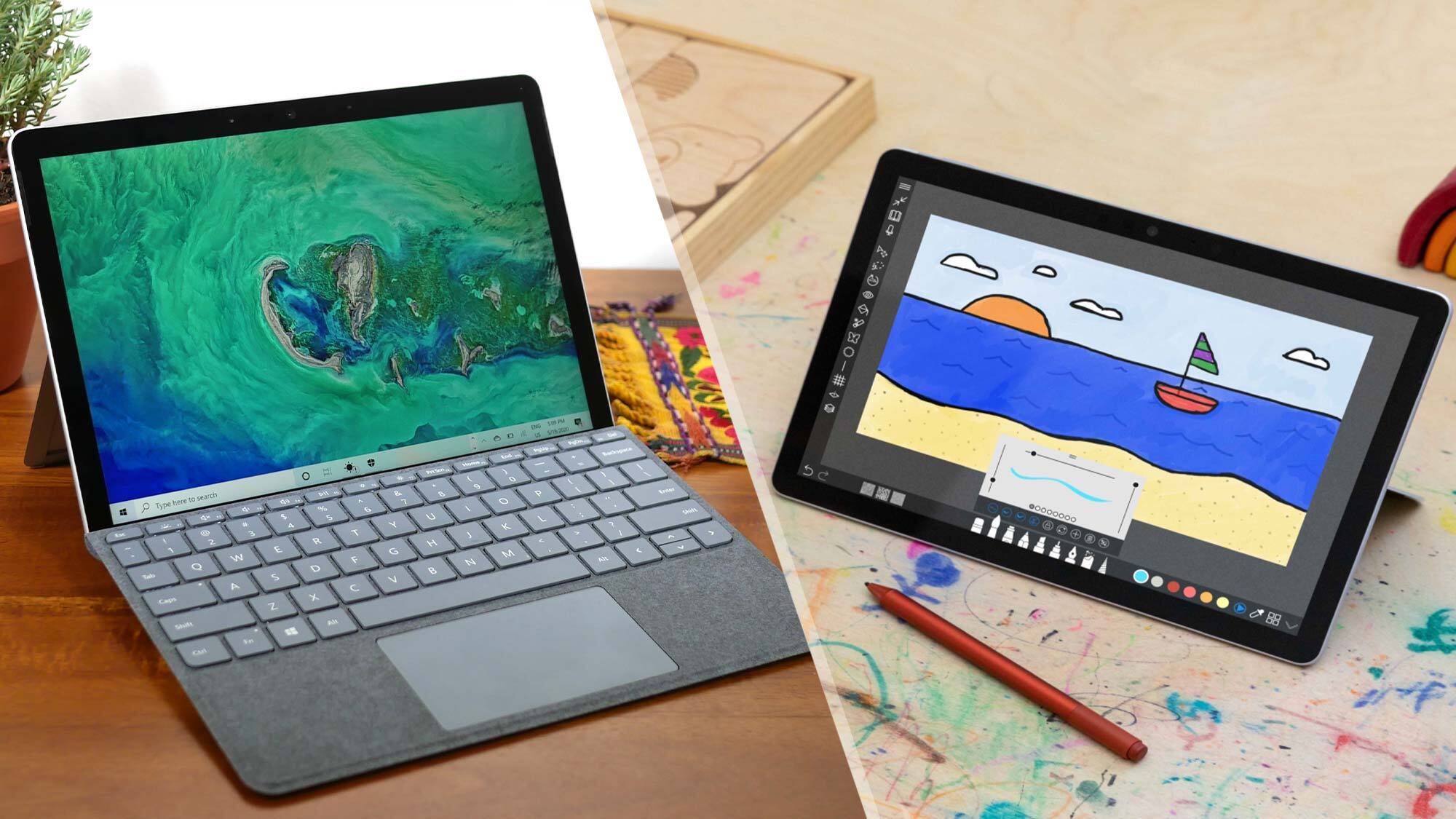
Surface Go 2 vs. Surface Go 3 may be the most captivating tablet face-off we’ve ever hosted because, unfortunately for Microsoft, the Surface Go 3 received poor critical reception compared to its predecessor. We slapped the third-generation tablet with a 2.5 rating in our review while sister sites Tom’s Guide and TechRadar gave it the same score. Prospective buyers who want a Microsoft 2-in-1 tablet may be wondering, “If the Surface Go 3 is getting dragged through the mud, should I get the Go 2 instead?”
That is the question we’ll be answering after putting the Go 2 and Go 3 through ferocious, brutish rounds to test their mettle and resolve. Although one would expect the Surface Go 3 to outshine and outperform the second-generation Go, I wouldn’t overlook the Go 2’s moxie and spunk.
- Surface Go 3 review
- The best tablets of 2021
This tablet tug-of-war unveils the strengths and weaknesses of both devices, allowing you to make an informed buying decision. Without further ado, let the games begin!
| Row 0 - Cell 0 | Surface Go 2 | Surface Go 3 |
| Starting price | $399 | $399 |
| Processors | Intel Pentium Gold 4425Y, Intel Core m3-8100Y | Intel Pentium Gold 6500Y, Intel Core i3-10100Y |
| Display | 10.5 inches (1920 x 1280 pixels) | 10.5 inches (1920 x 1280 pixels) |
| Battery Life | 11:39 | 6:50 |
| RAM | 4GB or 8GB | 4GB or 8GB |
| Weight with keyboard | 1.2 pounds | 1.2 pounds |
| Size | 9.6 x 6.9 x 0.3 inches | 9.6 x 6.9 x 0.3 inches |
| Ports | USB-C, headphone jack, Surface Connect | USB-C, headphone jack, Surface Connect |
Surface Go 2 vs. Surface Go 3: Value and configurations
The Surface Go 2 starts at $400 and comes with a low-end Intel Pentium Gold 4425Y processor, Intel UHD Graphics 615, 4GB of RAM and 64GB of eMMC storage. If you want a faster CPU, you’ll have to shell out $230 more for the 8th Gen Intel Core m3-8100Y variant, which sports 8GB of RAM and 128GB of SSD storage. The most expensive configuration ($729) features the same specs, but comes with LTE support.
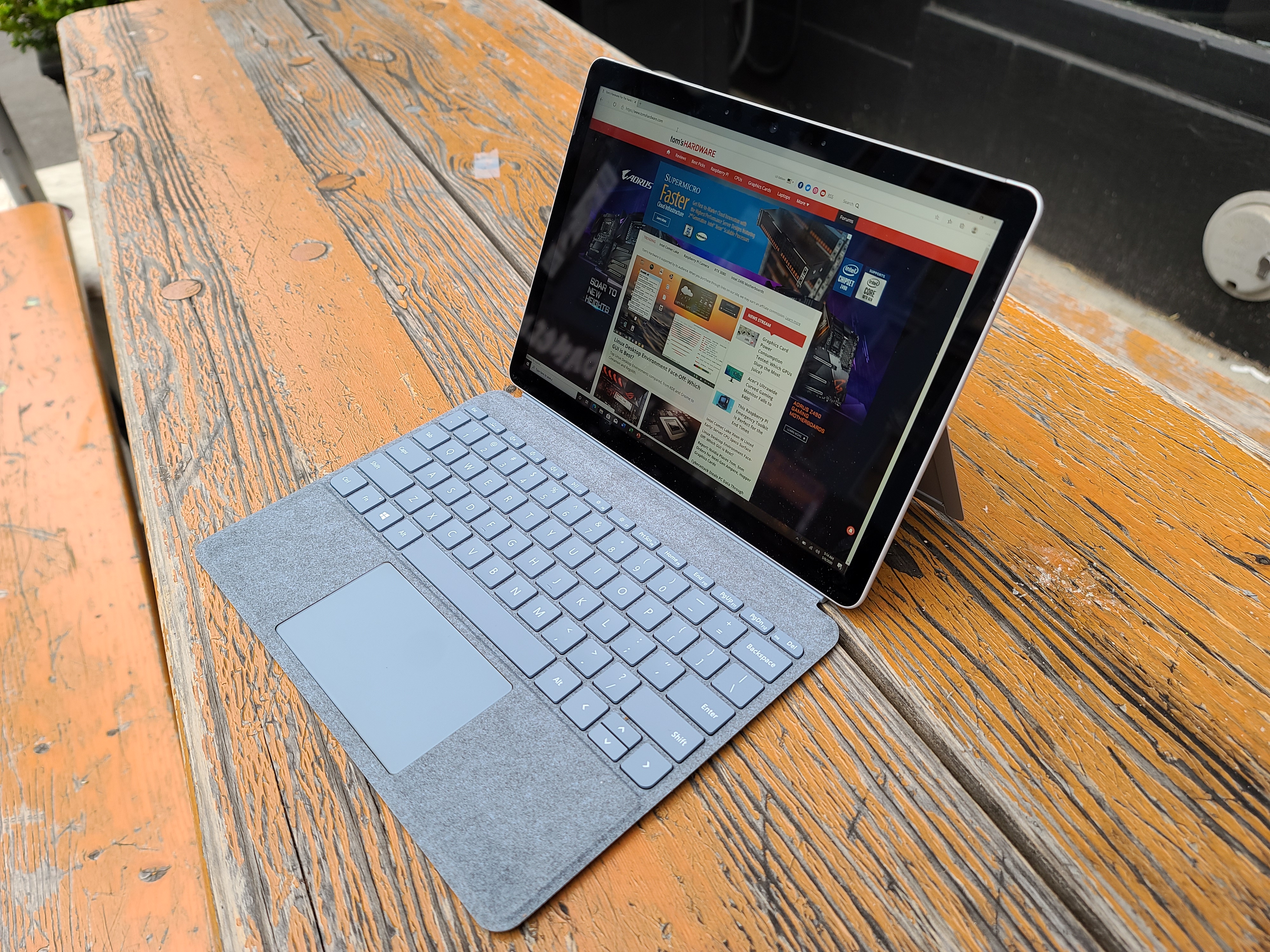
The Surface Go 3 also starts at $400 and is packed with an Intel Pentium 6500Y processor, Intel UHD 615 graphics, 4GB of RAM and 64GB of eMMC storage. If you want a zippier CPU, opt for the $630 variant, which comes with a 10th Gen Intel Core i3-10100Y processor, 8GB of RAM and a 128GB SSD. Surface Go 3 LTE models are not available yet, but they are poised to be released later this year.
Type Cover Keyboards, which help transform the Surface Go 2 and 3 tablets into laptops, are $90 as of this writing, but they MSRP at $130.
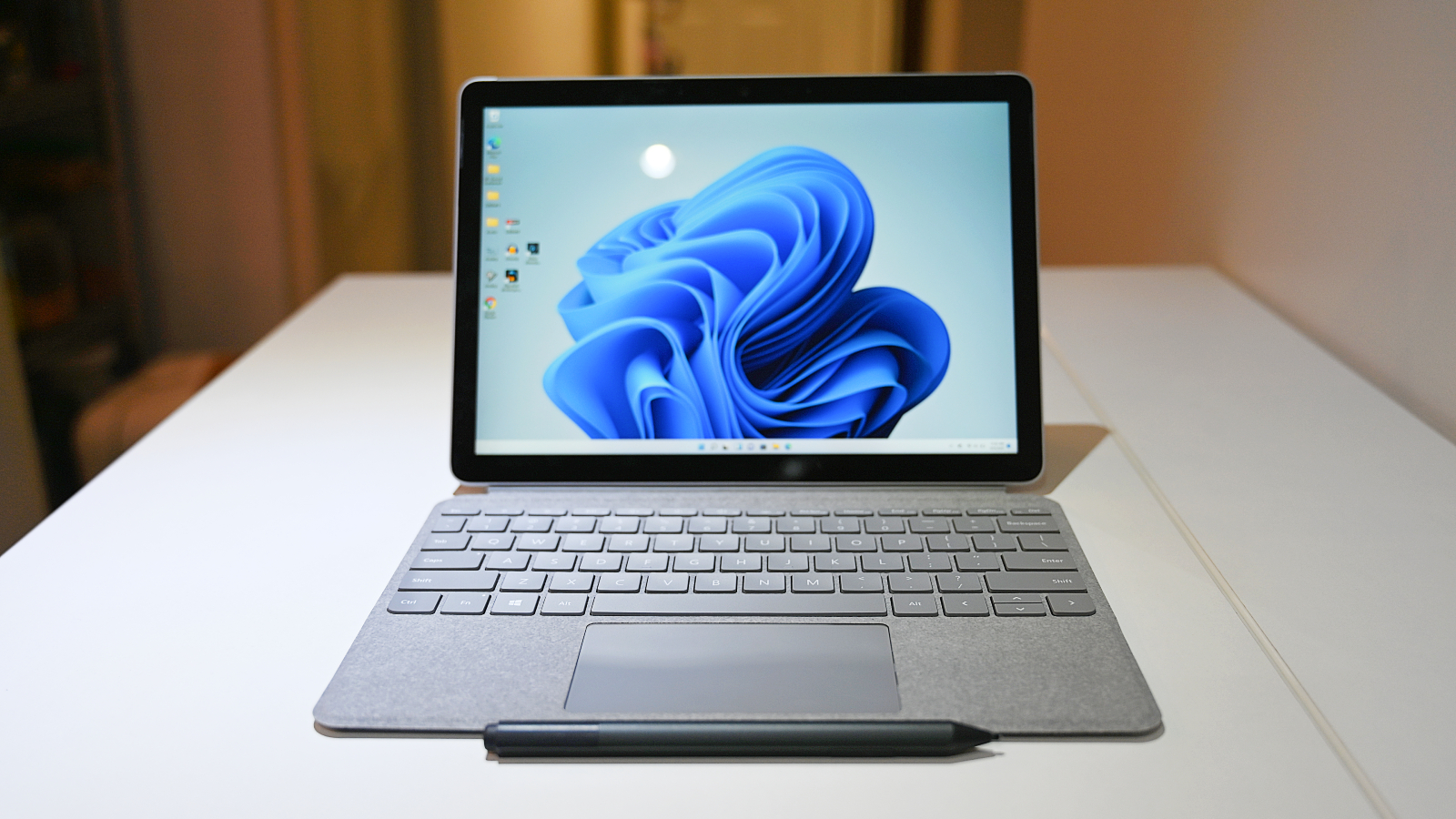
Whether you get the Surface Go 2 or Go 3, I wouldn’t recommend the low-end Intel Pentium models. Running Windows 11 will be a lot smoother and zippier with SSD storage and at least 8GB of RAM. To evade the Intel Pentium CPUs, you’ll have to spend at least $630 for either the Go 2 or Go 3.
Stay in the know with Laptop Mag
Get our in-depth reviews, helpful tips, great deals, and the biggest news stories delivered to your inbox.
Winner: Tie
Surface Go 2 vs. Surface Go 3: Design
The Surface Go 2 must be seething — the Surface Go 3 stole its aesthetic from head to toe. “You jacked my style!” it must’ve yelled at its successor. Microsoft played it too safe with the third-gen Go; it doesn’t look any different from its predecessor. Similar to the Go 2, the Go 3 has a silver magnesium body with the same obsolete, thick bezels that wrap around the 10.5-inch display. Though I’d prefer thinner bezels, I’m not complaining — I suppose your fingers need to rest somewhere. On the top edge, you’ll find a volume rocker and a power button. The bottom features connecting pins for the optional Type Cover keyboard.
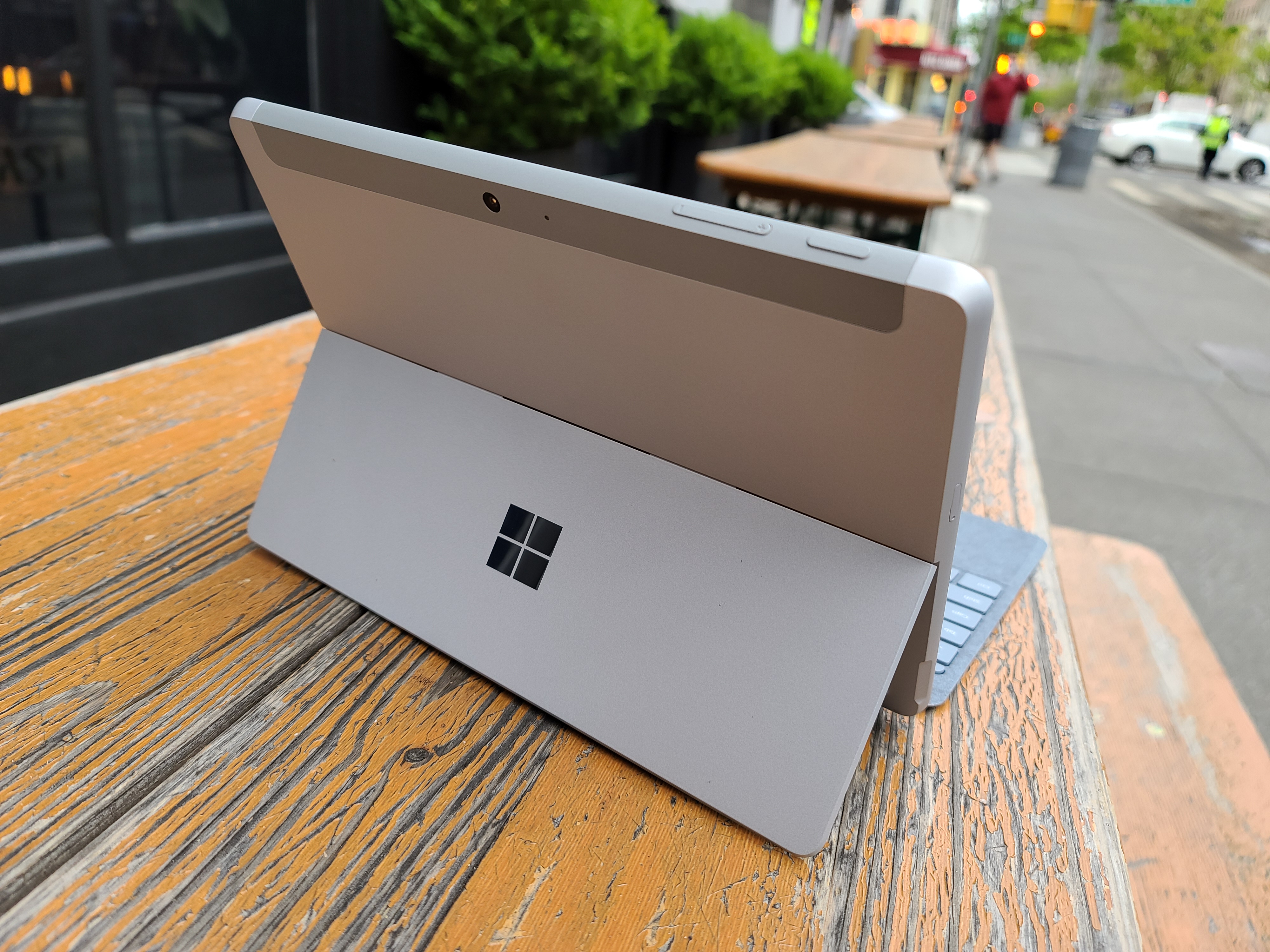
Both the Surface Go 2 and 3 have a built-in kickstand that offers a 165-degree range of motion, allowing the tablets to be propped up or converted into laptop mode with the Type Cover keyboard. A lustrous Microsoft logo can be found glimmering on the back of both tablets. They also have identical camera pairs: a 5-megapixel front-facing camera that supports 1080p video and a 8-megapixel, auto-focus, rear-facing camera.
The Surface Go line has always been a snoozefest in terms of style, design and skin. It won’t catch anyone’s eye nor turn any heads, but it will earn a nod of respect in professional circles.
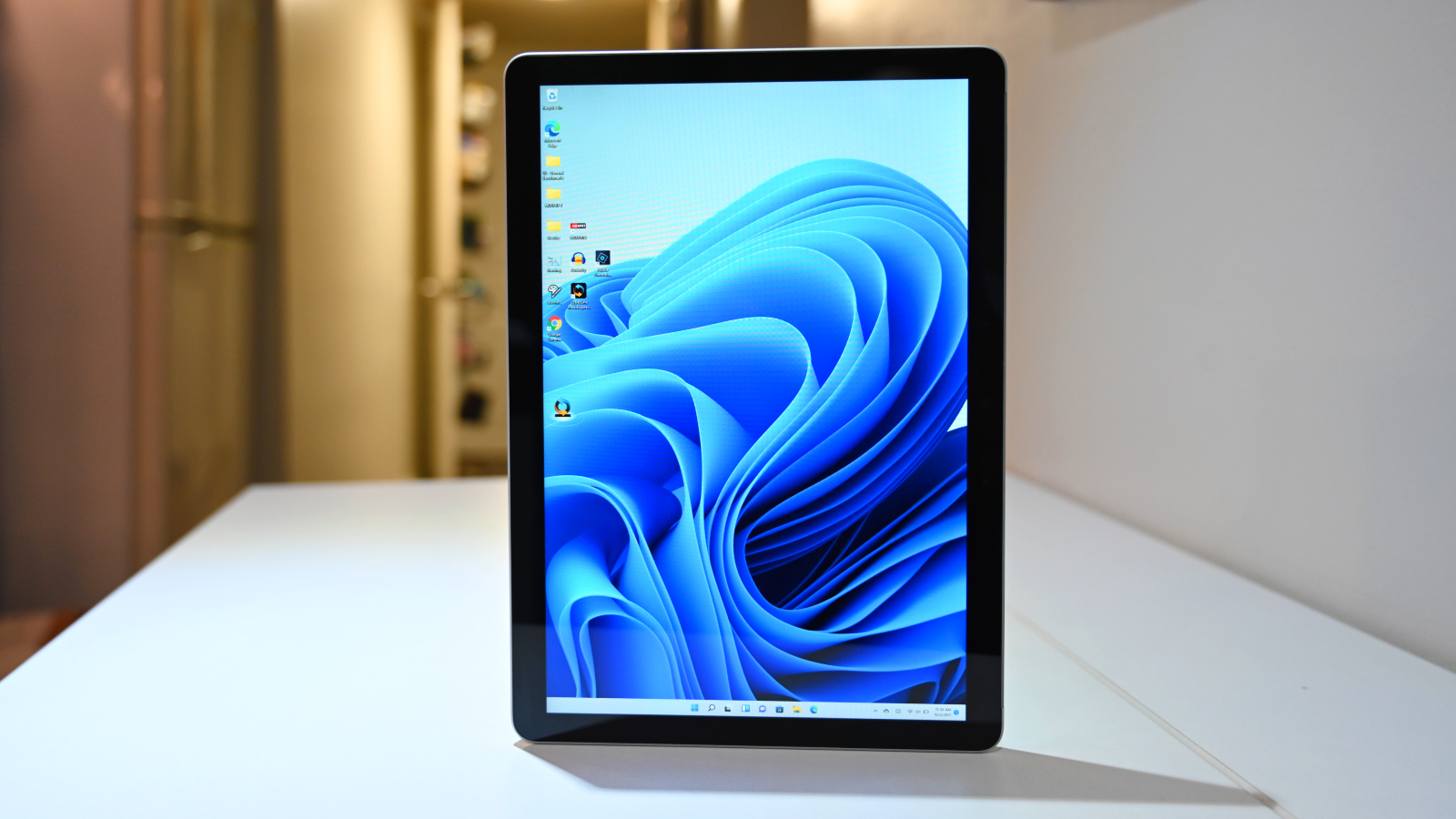
The Surface Go 2 and Go 3 are ideal for on-the-go busy bees who need something compact and portable for their commute or travels. Both only weigh 1.2 pounds and have dimensions of 9.6 x 6.9 x 0.3 inches.
Winner: Tie
Surface Go 2 vs. Surface Go 3: Ports
Once again, the Surface Go 2 and Surface Go 3 are neck and neck in this round.
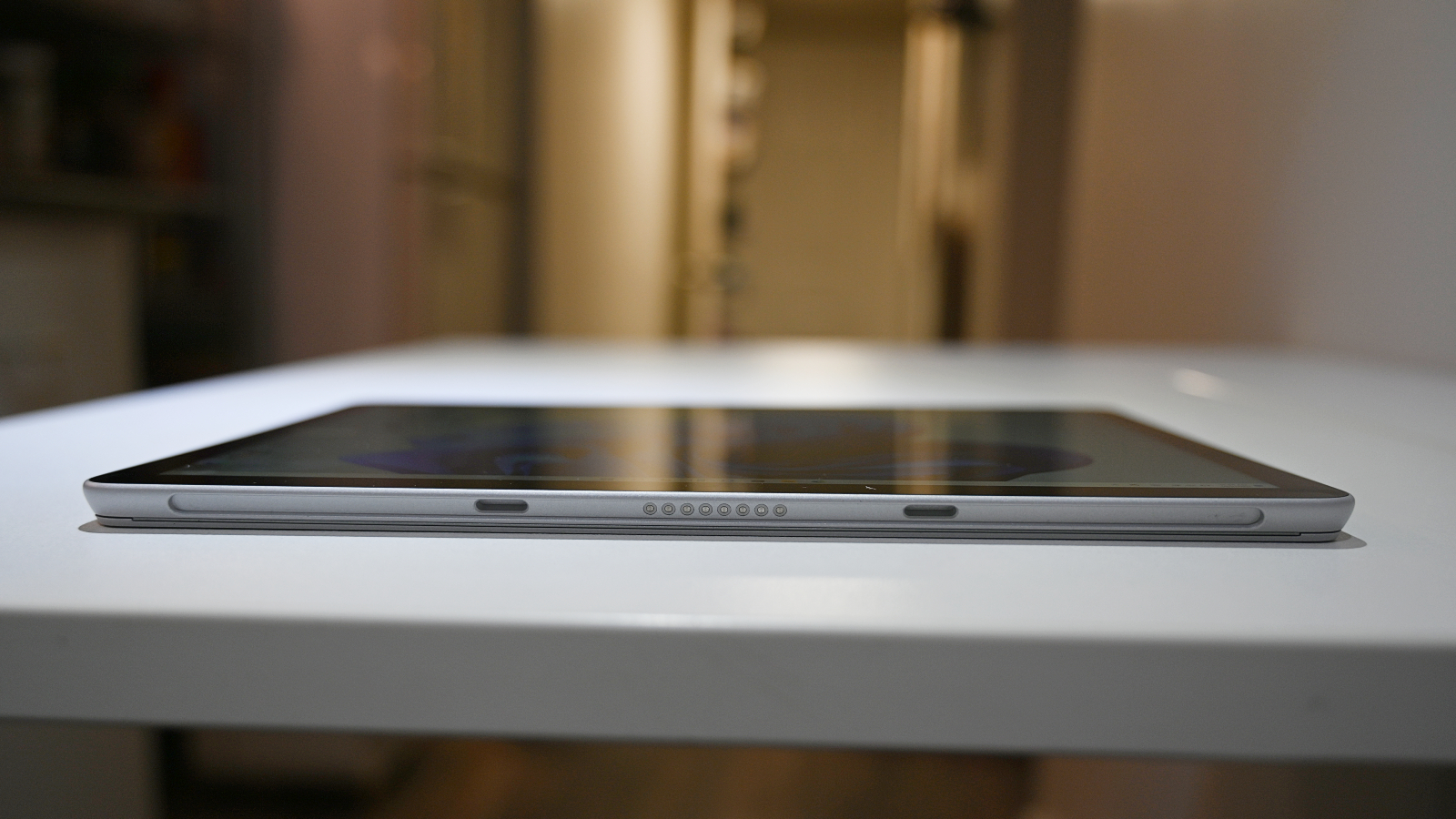
Both sport the same ports: a headphone jack, a USB-C input and a Surface Connector. You’ll also find a microSD card slot under the kickstand. LTE models have a nano-SIM tray located on the left side (under the kickstand).
Winner: Tie
Surface Go 2 vs. Surface Go 3: Display
As mentioned, the Surface Go 2 and 3 have the same 10.5-inch, PixelSense, Corning Gorilla Glass 3 display with 1920 x 1080-pixel resolution. Both serve up a screen-to-body ratio of 76.5%.
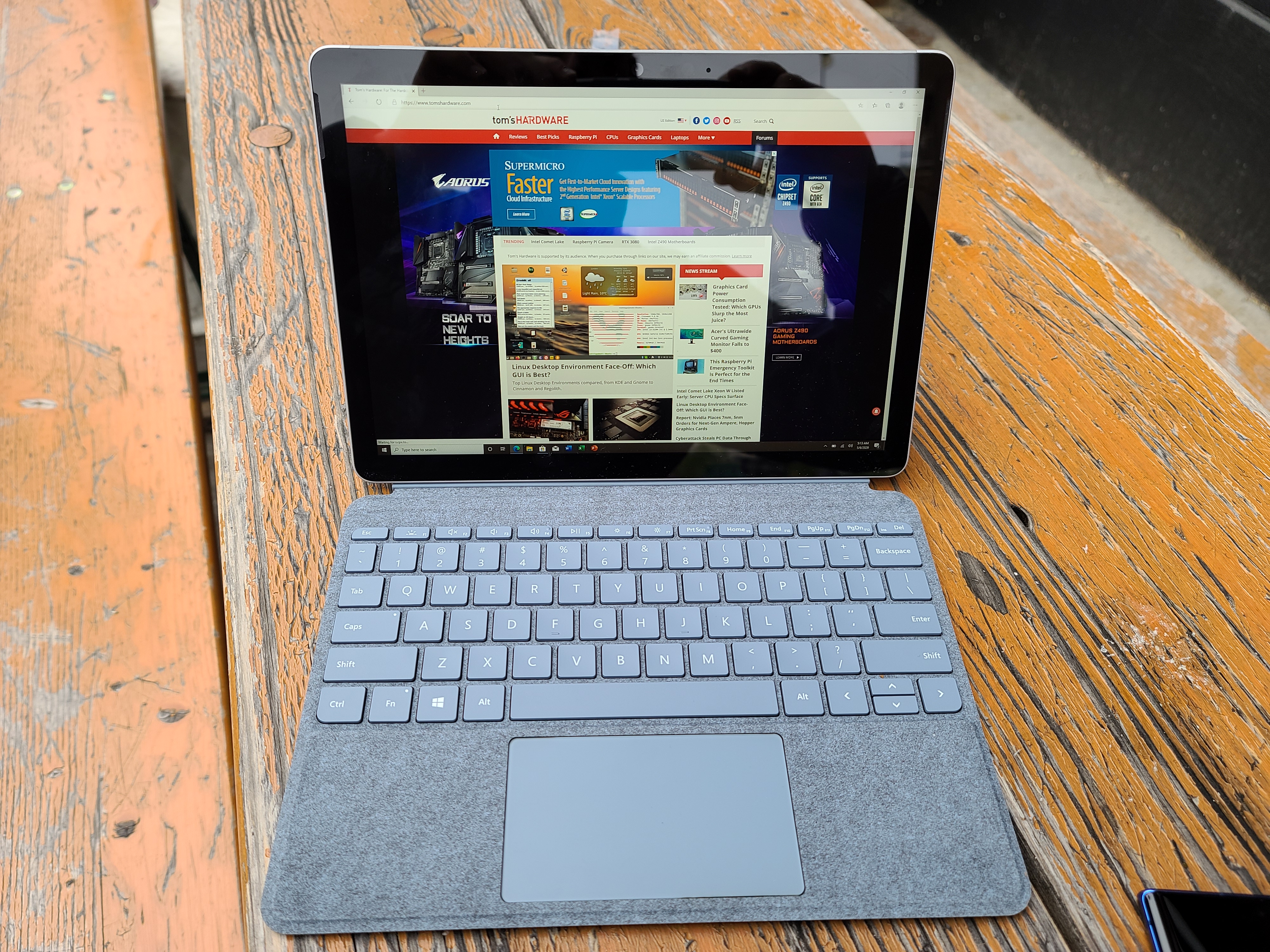
Strangely enough, according to our testing, the Surface Go 3 is a tinge dimmer than the Surface Go 2. It climbed up to 402 nits of brightness while its predecessor emanated 408 nits. The Surface Go 2 also outperforms the Go 3 in terms of DCI-P3 coverage, claiming 76% of the color space; the third-gen Go covers 74%.
When we tested the displays for color accuracy, both earned the same Delta-E score of 0.24 (closer to zero is better).
Winner: Surface Go 2
Surface Go 2 vs. 3: Keyboard and stylus
If there’s one aspect of the Surface Go line that Microsoft gets right, it’s the optional Type Cover Keyboard that transforms the Windows tablet into a mobile, lightweight laptop. It’s a shame that Microsoft doesn’t ship the Go 2 and Go 3 with the detachable keyboard. A Type Cover-less Surface Go experience doesn’t sound very fun — the on-screen keyboard isn’t efficient (especially for high-productivity workflows).
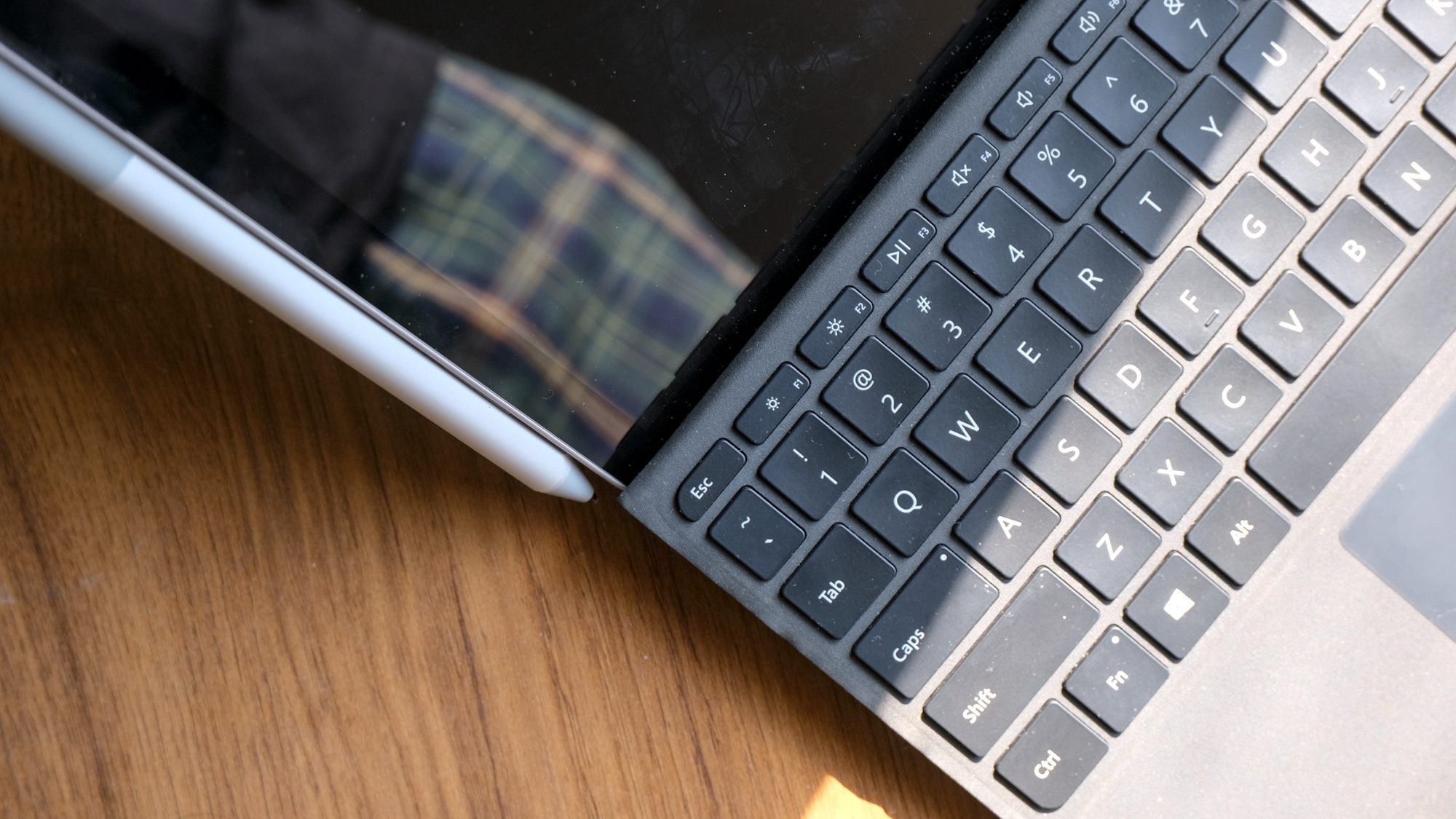
Spanning less than 10 inches from key to key, the first thought that comes to mind is, “Will I feel comfortable typing on the Type Cover keyboard?” On one hand, the keys are surprisingly clicky and provide satisfactory tactile feedback. The 3.8 x 2.2-inch, smooth glass touchpad is small, but adequate and responsive to Windows gestures, including pinch-to-zoom and two-finger scrolling.
On the other hand, the Type Cover’s inability to remain fixed while you’re typing on it is a common complaint. The keyboard also feels cramped and is unsuitable for large-handed users. On the plus side, if you’re a frequent traveler, the miniature keyboard forces you to “stay in your lane,” so you won’t irk nearby passengers by accidentally elbowing them.
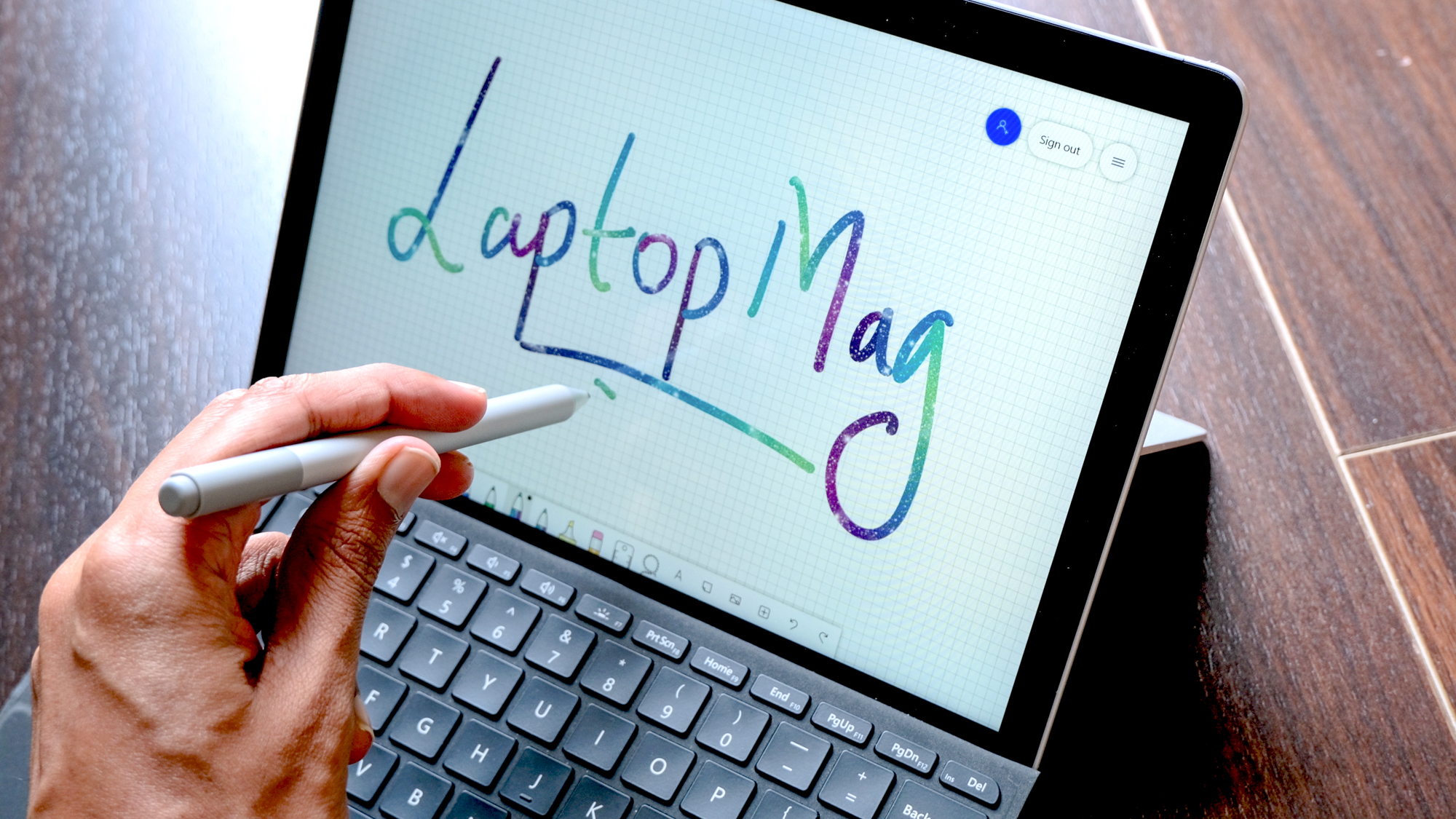
The Surface Go Type Cover is available in Ice Blue, Poppy Red, Platinum and Black. You can also choose between a microfiber skin or a plush Alcantara body.
You can also add an optional stylus to the Surface Go 2 and 3 experience, but it’s not a must-have unless you have an affinity for sketching or taking notes. The Surface Pen has 4,096 pressure points. It also has a tail eraser, a customizable button and supports tilt for shading.
Winner: Tie
Surface Go 2 vs. Surface Go 3: Performance
Here’s where things get a little bit interesting. To test their performance, we pitted the Surface Go 2, packed with an 8th Gen Intel Core m3-8100Y CPU against the Surface Go 3 (powered by a 10th Gen Intel Core i3-10100Y processor). Keep in mind that neither of these chips are au courant — not even the Surface Go 3’s processor. Intel’s latest, a la mode chips are from the 11th generation known as Tiger Lake. As such, the Surface Go 3’s CPU is a generation behind, but that’s no surprise since it’s Microsoft’s entry-level, budget tablet.
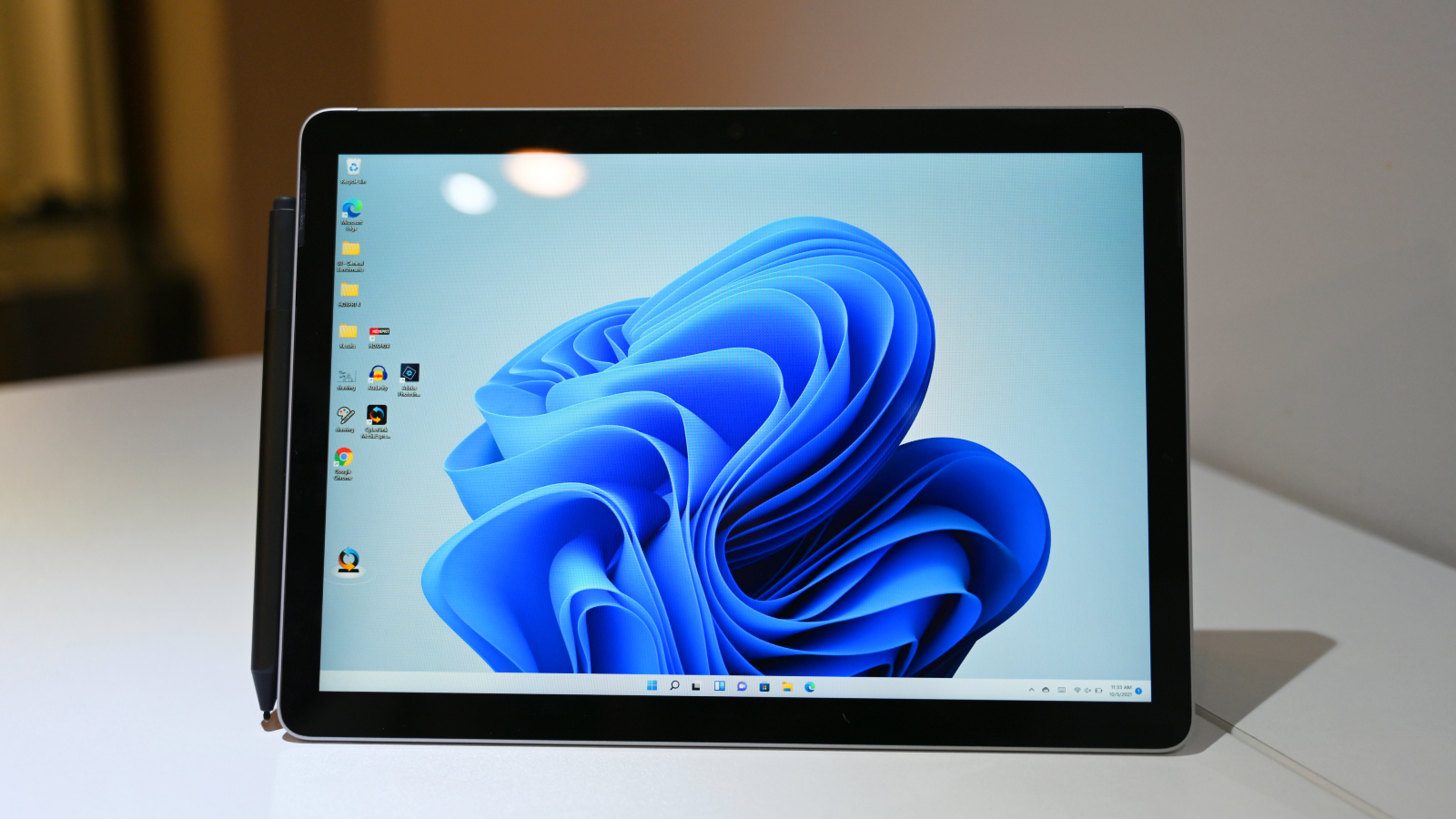
One would assume that the Surface Go 3 would totally smoke the Surface Go 2 on the Geekbench 5.4 overall performance test, but the third-generation tablet only mustered a measly, embarrassing score of 1,571, which is worse than the Go 2’s score (1,617). These benchmarks caught me off guard, but the Go 3’s 10th Gen Intel Core i3-10100Y CPU is based on the same 2018 Amber Lake architecture as the Go 2’s 8th Gen Intel Core m3 SoC, so the results aren’t too surprising.
On the file-transfer test, the 128GB SSD inside the Surface Go 2 took 2 minutes and 44 seconds to duplicate 25GB of multimedia files, which translates to a snail-like transfer rate of 163.7 megabytes per second. The Go 3 (also sporting a 128GB SSD) emerged victorious in this contest, serving up a faster file-transfer rate of 234 MBps.
The Surface Go 2 and 3 aren’t gaming devices by any means (unless you decide to use streaming services like Xbox Game Pass), but if you’re curious about how well both tablets performed on the Sid Meier's Civilization VI: Gathering Storm benchmark (Very High, 1080p), we have the numbers for you. The Go 2 notched five frames per second while the Go 3 served up six.
Winner: Surface Go 3
Surface Go 2 vs. Surface Go 3: Battery life
This one baffled us. Microsoft boasted that the Surface Go 3 offers “all day battery life” and up to 11 hours of “typical device usage.” Well, our battery life results beg to differ.
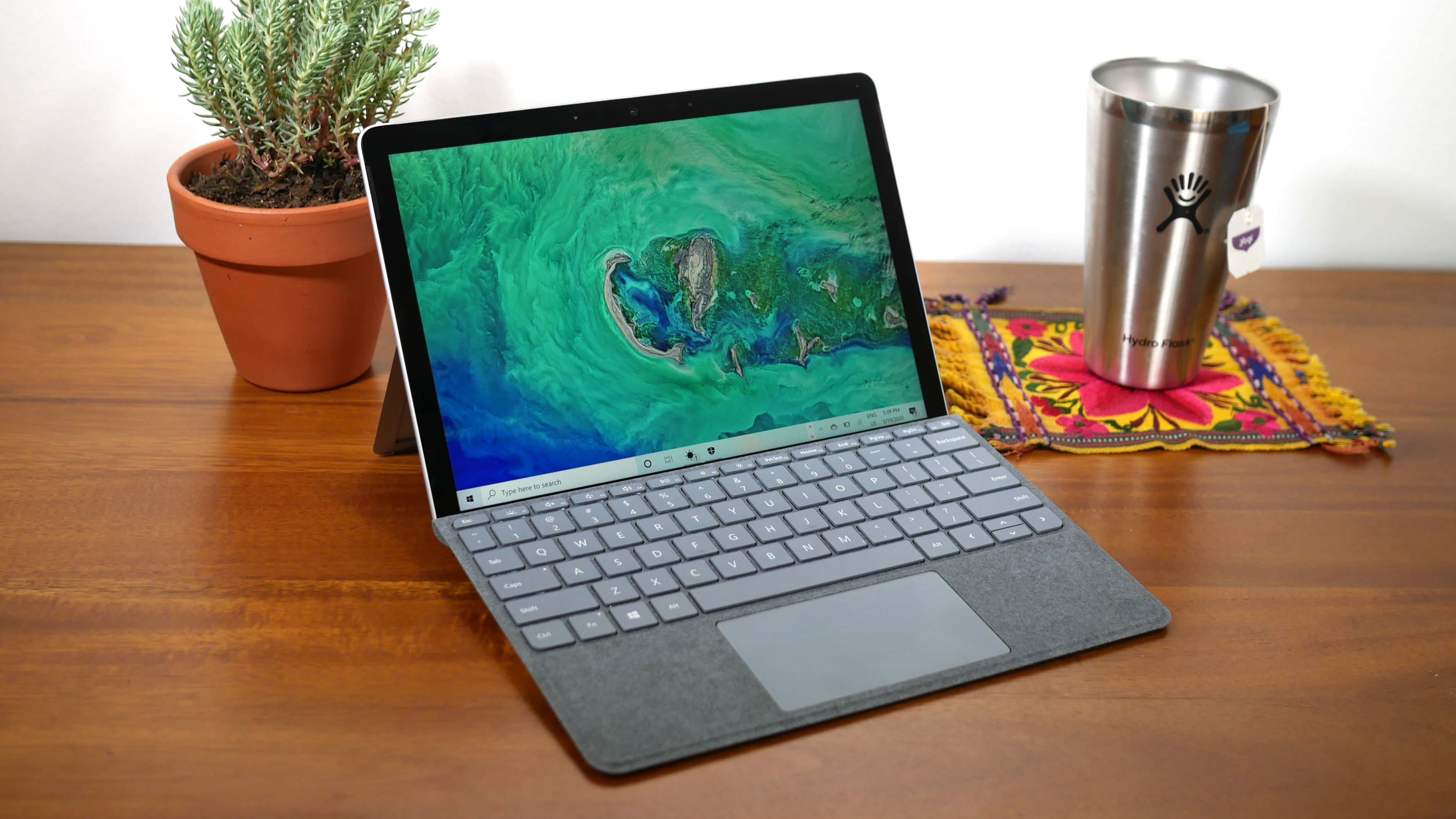
The Surface Go 3, after continuously surfing the web over Wi-Fi at 150 nits, tapped out after only 6 hours and 50 minutes. This is much shorter than the Surface Go 2, which has a stellar runtime of 11 hours and 39 minutes. Excellent power efficiency is a must for portable, mobile devices. The Go’s target consumers — on-the-go travelers who don’t always have access to power outlets — can’t compromise on battery life, so this is one of the most disappointing aspects of the Go 3.
Winner: Surface Go 2
Overall winner: None
I’m sorry to the competitors, but neither one deserves a championship belt. If you have a Surface Go 2 and are wondering if you should get its successor, don’t bother. The Surface Go 3 was updated with new internals, but according to our testing, its performance scores are disappointing — it either trailed behind its predecessor or edged out the Surface Go 2 by an insignificant margin.
The Surface Go 3’s battery life is another major setback, lasting only 7 hours compared to the Go 2’s 11-hour runtime.
The Surface Go 3 is a clone of its predecessor, but its poor endurance and sluggish performance makes it the evil twin of the duo. Although the Surface Go 2 outperformed the Surface Go 3 in many rounds, we don’t recommend purchasing a device with a processor that’s several generations old.
If you were planning on buying the whole shabang — a Surface Go 3 with a Type Cover keyboard and the best CPU offering — it would set you back about $760. Let me offer you some alternatives. You can get the 64GB iPad Air with the Magic Keyboard, but it’s pricier ($898). If you don’t mind Chrome OS, you should also consider the $300 Lenovo Chromebook Duet, which is reminiscent of the Go line. The best option, however, is the Samsung Galaxy Tab S7 FE. You can get the $599, 128GB tablet (S Pen is included) with the $130 Book Cover Keyboard for a total of $730. Plus, it has 13 hours of battery life. Win!
Kimberly Gedeon, holding a Master's degree in International Journalism, launched her career as a journalist for MadameNoire's business beat in 2013. She loved translating stuffy stories about the economy, personal finance and investing into digestible, easy-to-understand, entertaining stories for young women of color. During her time on the business beat, she discovered her passion for tech as she dove into articles about tech entrepreneurship, the Consumer Electronics Show (CES) and the latest tablets. After eight years of freelancing, dabbling in a myriad of beats, she's finally found a home at Laptop Mag that accepts her as the crypto-addicted, virtual reality-loving, investing-focused, tech-fascinated nerd she is. Woot!

